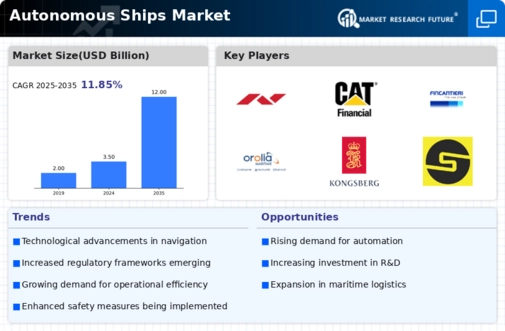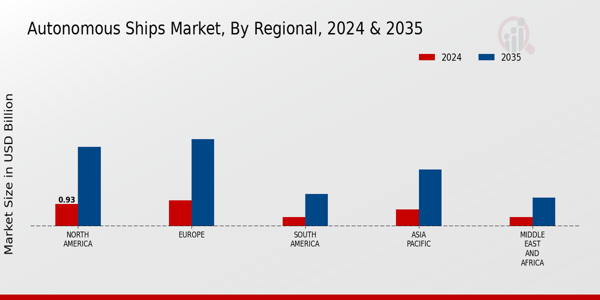Autonomous Ships Market Summary
As per Market Research Future Analysis, the Autonomous Ships Market was valued at 3.13 USD Billion in 2023 and is projected to grow to 12 USD Billion by 2035, with a CAGR of 11.85% from 2025 to 2035. The market is driven by technological advancements, safety concerns, and sustainability efforts, with significant investments in research and development from both governments and private sectors. Major shipping companies are adopting autonomous technologies to enhance operational efficiency and reduce costs, while regulatory frameworks are evolving to support the deployment of autonomous vessels.
Key Market Trends & Highlights
The Autonomous Ships Market is witnessing transformative trends that are reshaping maritime operations.
- The market is expected to reach 3.5 USD Billion by 2024, driven by increasing demand for shipping efficiency.
- Cargo ships dominate the market, valued at 1.4 USD Billion in 2024, highlighting their critical role in global trade.
- Technological advancements in AI and automation are projected to improve safety and efficiency by up to 40%.
- Regulatory support is anticipated to increase the deployment of autonomous vessels by 15% by 2030.
Market Size & Forecast
| 2023 Market Size | USD 3.13 Billion |
| 2024 Market Size | USD 3.5 Billion |
| 2035 Market Size | USD 12 Billion |
| CAGR (2025-2035) | 11.85% |
Major Players
Key players include Nortek, Caterpillar, Fincantieri, Orolia, Kongsberg Gruppen, Sea Machines Robotics, Hyundai Heavy Industries, GE Marine, Bae Systems, Mitsubishi Heavy Industries, Rolls-Royce, Naval Group, Wärtsilä, and Thales Group.
























Leave a Comment